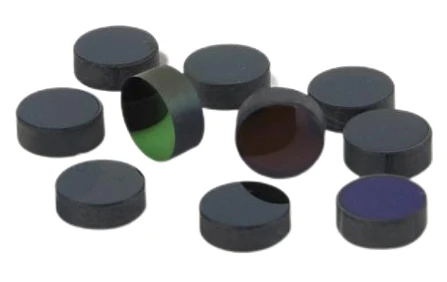Description
Cr⁴⁺:YAG, or chromium-doped yttrium aluminum garnet, is a highly versatile crystal utilized primarily for Q-switching in lasers with wavelengths ranging from 0.8 to 1.2 μm, such as Nd:YAG and other Nd or Yb-doped lasers. This crystal is an active medium capable of functioning in continuous wave (CW), pulsed, or self-mode-locked tunable near-infrared (NIR) solid-state lasers. Additionally, Cr⁴⁺:YAG is effective in Q-switching lasers with tunable ranges from 1340 to 1580 nm and those operating within 950 to 1100 nm. A standout characteristic of Cr⁴⁺:YAG is its high damage threshold, which ranges from 500 to 1000 MW/cm². The absorption band of this crystal extends from 800 nm to 1200 nm, peaking at approximately 1060 nm, with a notably large cross-sectional area at its absorption peak. Its emission wavelength is 2.94 μm, making it widely applicable in laser medicine and other fields where high performance and reliability are crucial. The physical and optical properties of Cr⁴⁺:YAG contribute to its robustness and efficiency. It has a cubic crystal structure with a lattice parameter of 12.01 Å. The crystal orientation is available in [100] or [110], with a density of 4.56 g/cm³ and a Mohs hardness of 8.5. These properties ensure that Cr⁴⁺:YAG can withstand demanding operational conditions, offering **good thermal conductivity and thermal shock resistance**. The crystal's thermal conductivity is 14 W/m/K at 20℃ and 10.5 W/m/K at 100℃, with a thermal shock resistance of 790 W/m. These attributes make it an ideal choice for high-power laser applications. In terms of processing, Cr⁴⁺:YAG is manufactured with precision to meet stringent specifications. It boasts a surface flatness of less than λ/8 at 632 nm and wavefront distortion of less than λ/4 at 632 nm, ensuring optimal performance in laser systems. The crystal is available in dimensions ranging from 2*2 mm to 15*15 mm, with a thickness/diameter tolerance of ±0.05 mm, making it adaptable for various laser configurations.
Cr:YAG Crystal for Q-Switching and NIR Solid-State Lasers
Specifications
| Type Of Crystal: | Cr:YAG |
|---|---|
| Crystal Diameter: | 2 mm |
| Crystal Length: | 20 mm |
| AR Coating: | Uncoated, Both sides, One side |
| Thermal Shock Resistance: | 790 W/m |
| Chemical Formula: | Cr4+:Y3Al5O12 |
| Crystal Structure: | cubic crystal system |
| Dimensions: | 2-15mm x 20mm |
| Wavefront Distortion: | <λ/4 @632 nm |
| Surface Flatness: | <λ/8 @632 nm |
| Thickness/Diameter Tolerance: | ±0.05 mm |
| Orientation Tolerance: | <0.5° |
| Excited State Absorption Cross Section: | 8.2×10-19 cm2 |
| Ground State Absorption Cross Section: | 4.3×10-18 cm2 |
| Absorption Coefficient: | 1.0 cm-1~7 cm-1 |
| Emission Wavelength: | 1350 nm~1600 nm |
| Concentration: | 0.5 mol%~3 mol% |
| Fluorescence Lifetime: | 3.4 μs |
| Optical Density: | 0.1 to 0.8 |
| Solubility: | Insoluble in water, slightly soluble in common acid |
| Lattice Parameter: | 12.01 Å |
| Thermo-Optic Coefficient: | dn/dT=7.3×10-6/K |
| Thermal Conductivity @100℃: | 10.5 W/m/K |
| Thermal Conductivity @20℃: | 14 W/m/K |
| Thermal Expansion <100>: | 8.2×10-6/°C @25°C |
| Thermal Expansion <110>: | 7.7×10-6/°C @25°C |
| Thermal Expansion <111>: | 7.8×10-6/°C @25°C |
| Specific Heat: | 0.59 J·g-1·K-1 |
| Thermal Conductivity Coefficient: | 0.1213 |
| Melting Point: | 1970°C |
| Tensile Strength: | 2 GPa |
| Young's Modulus: | 335 GPa |
| Mohs Hardness: | 8.5 |
| Density: | 4.56 g/cm3 |
| Crystal Orientation: | [100] or [110] <±0.5° |
Features
- High Efficiency: Cr⁴⁺:YAG crystals offer superior performance in laser applications.
- High Damage Threshold: With a range of 500 to 1000 MW/cm², these crystals can withstand high power levels.
- Room Temperature Operation: Suitable for various environments without the need for special cooling systems.
- Eye Safety: The laser working wavelength is relatively safe for human eyes.
- Thermal Properties: Excellent thermal conductivity and thermal shock resistance ensure stability and durability.
Physical and Optical Properties:
- Chemical Formula: Cr4+:Y3Al5O12
- Crystal Structure: Cubic crystal system
- Lattice Parameter: 12.01 Å
- Density: 4.56 g/cm³
- Mohs Hardness: 8.5
- Young's Modulus: 335 GPa
- Tensile Strength: 2 GPa
- Melting Point: 1970°C
- Thermal Conductivity Coefficient: 0.1213
- Specific Heat: 0.59 J·g-1·K-1
- Thermal Expansion: 7.8 × 10-6/°C @ 25°C
- Thermal Conductivity: 14 W/m/K @ 20°C, 10.5 W/m/K @ 100°C
- Thermo-Optic Coefficient: dn/dT = 7.3 × 10-6/K
- Thermal Shock Resistance: 790 W/m
- Solubility: Insoluble in water, slightly soluble in common acids
- Optical Density: 0.1 to 0.8
Applications
- Passive Q-switched laser
- Short-pulse laser system
- Laser ranging
Frequently Asked Questions
What is Cr:YAG used for?
What are the key features of Cr:YAG crystals?
What is the chemical formula and crystal structure of Cr:YAG?
What is the emission wavelength range of Cr:YAG?
What is the damage threshold of Cr:YAG?
What are the physical properties of Cr:YAG?
What are the processing tolerances for Cr:YAG?
Similar Products
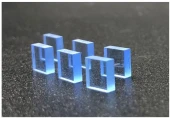
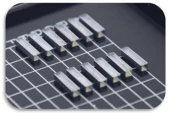
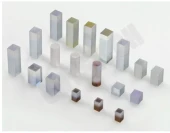
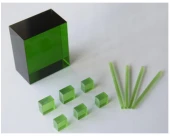
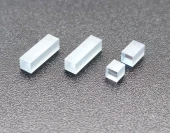
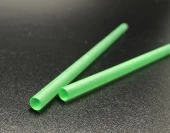

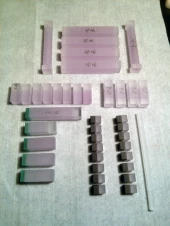
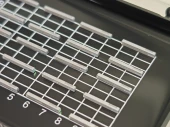
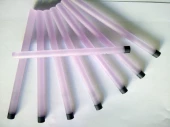
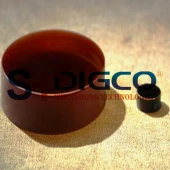
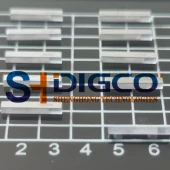
Your inquiry has been received.
Create an account by adding a password
Why create an account?
- Auto-complete inquiry forms
- View and manage all your past messages
- Save products to your favorites
- Close your account anytime — no hassle
